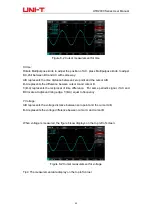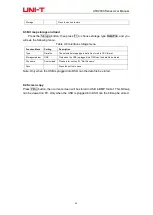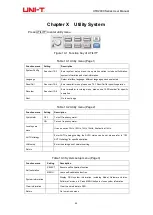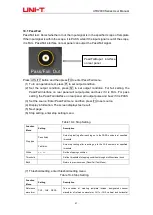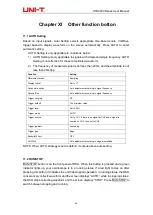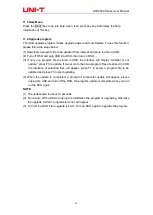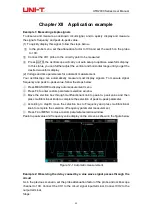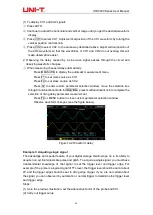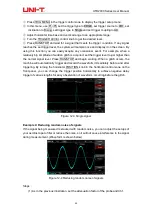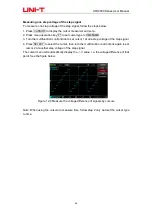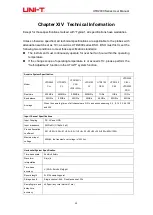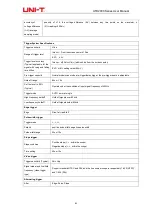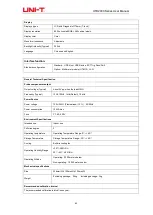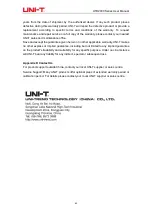
UTD2000 Series User Manual
53
(1) To display CH1 and CH2 signals
①
Press AUTO.
②
Continue to adjust the horizontal and vertical range until you get the desired waveform
display.
③
Press CH1 to select CH1. Adjust vertical position of the CH1 waveform by turning the
vertical position control knob.
④
Press CH2 to select CH2. In the same way described above, adjust vertical position of
the CH2 waveform so that the waveforms of CH1 and CH2 do not overlap, this will
make observation easier.
2. Observing the delay caused by a sine wave signal passes through the circuit and
observing waveform changes.
①
When measuring channel delay automatically:
Press MEASURE to display the automatic measurement menu.
Press F1 to set main source as CH1.
Press F2 to set slave source as CH2.
Press F2 to enter custom parameter selection window, move the selection box
through multifunctional knob to rising time, press multifunctional knob to complete the
selection of rising delay parameter measurement.
Press F4 or MENU button to close custom parameter selection window.
Observe waveform changes (see the figure below).
Figure 12-2 Waveform delay
Example 3: Acquiring single signal
The advantage and special feature of your digital storage Oscilloscope
lie in its ability to
acquire non cyclical signals like pulse and glitch. To
acquire a single signal, you must have
transcendental knowledge of
that signal to set the trigger level and trigger edge. For
example, if the
pulse is a logical signal of TTL level, the trigger level should be set at
about
2V and the trigger edge should be set to rising edge trigger. If you
are not certain about
the signal, you can observe it by automatic or
normal trigger to determine the trigger level
and trigger edge.
Steps:
(1) As in the previous illustration, set the attenuation factor of the
probe and CH1.
(2) Carry out trigger setup




